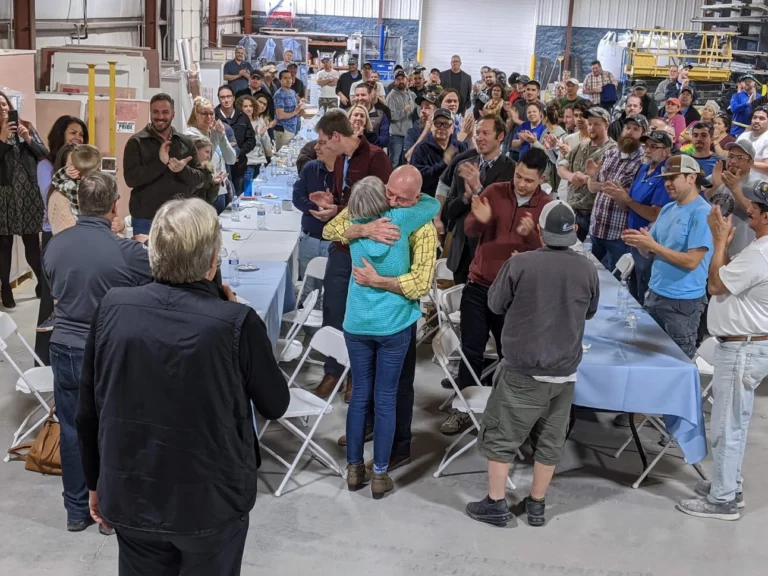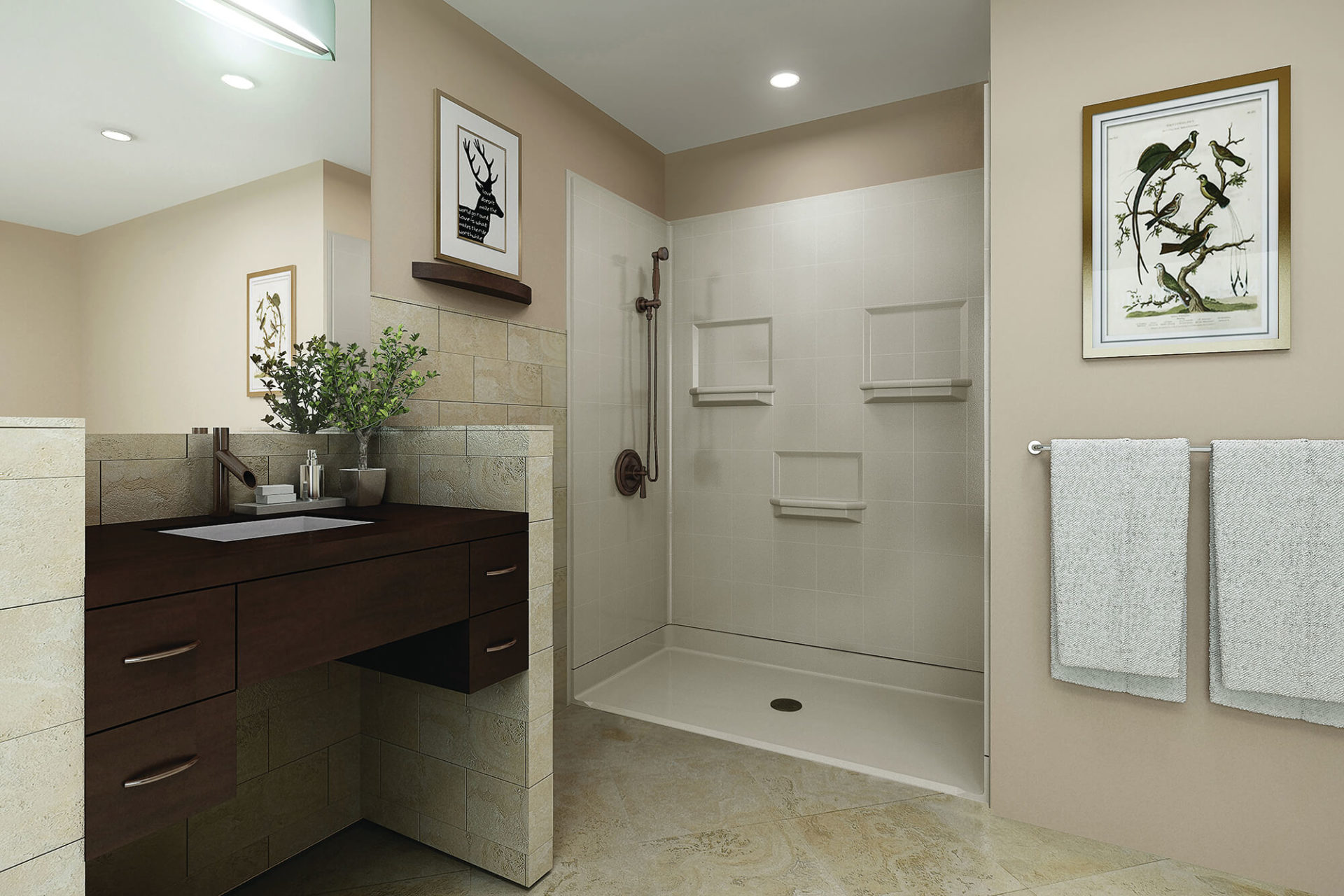Missile containers. Muzzle covers. Aquaculture Filtration Equipment. Wildlife water tanks… and bathtubs?
“During those first few years, we built it all,” says retiring Bestbath engineer Peter van Ravenhorst. “We were always innovating on how to build stuff, and that’s what helped us get ahead in the bathing industry later on.” Van Ravenhorst started at Bestbath in 1986 as an engineer designing molds for a wide range of fiberglass products. Today, he’s retiring from the company, which now employs over 175 people manufacturing thousands of composite showers at its state-of-the-art facility in Caldwell, Idaho.
Innovating from the Start

In the mid-1980s, van Ravenhorst was designing soaker tubs for another company, waiting for a new challenge. When former Bestbath CEO GaryMultanen hired him as an engineer at Bestbath (then called Fiberglass systems, Inc), he quickly jumped on the opportunity.
At Bestbath, van Ravenhorst says there was no room for error when it came to his work. As a one man Engineering department, he would create designs for composite products that would be replicated thousands of times. He had to ensure every detail was perfect, from the thickness to the shape of the mold.
One little mistake could cost the company thousands of dollars.
“Back then, as a new employee, It felt like being thrown into the deep end,” van Ravenhorst says. “It was sink or swim — you had to keep your head over the water. I loved it.”
At the time, Bestbath employed just 30 people in its small shop in Boise. While the company largely made its profits from showers and bathtubs, van Ravenhorst says Bestbath would take on virtually any request for fiberglass products.
Van Ravenhorst and his growing team designed containers for Harpoon missiles and muzzle covers used on US Navy battleships. The company also signed a million dollar contract to build 744 ea. Auxiliary Power Unit containers for military helicopters. At the request of Idaho Department of Fish and Game, van Ravenhorst and his team designed tanks used to collect rainfall on BLM land so local wildlife could drink fresh water during the dry season.
The aquaculture industry started thriving in the ‘90s and we figured out a way to build filtration equipment for catfish, talapia and abelone farms, fish hatcheries and salmon research.
“Showers and baths were our bread and butter,” van Ravenhorst says. “But I always had new projects to keep learning and keep every day interesting.”
Through it all, van Ravenhorst says Multanen kept his team feeling valued, challenged and inspired to take calculated risks.
“When he saw potential in you, he gave you the chance to perform and prove yourself,” van Ravenhorst says. “If you could tackle what was thrown at you, he always gave you more chances to grow.”
A New Challenge
In the early 1990s, the Americans with Disabilities Act (also known as ADA) changed the game of shower and bath manufacturing.
Van Ravenhorst and his team quickly received more and more requests for ADA-compliant products. There was a growing need for solutions that not only met regulations, but were sturdy, durable and beautifully made.
But solving new challenges wasn’t new for van Ravenhorst and his team — Innovation was something he had done all along.
After receiving requests from assisted living facilities for more accessible options, the Bestbath engineering team designed hybrid products; ones that weren’t as large as the ADA requirements, but were still built with accessibility in mind.
Their biggest innovation? A multi-piece, barrier-free shower — the first of its kind in the industry. It was easier to transport, remodel with and completely water-tight, making it an ideal solution for remodels of older buildings and existing homes.
“That’s when we really found our niche,” van Ravenhorst says. “We were doing what no one else was doing.”
Van Ravenhorst and his team’s designs are now utilized in thousands of universities, hospitals, multi family homes and assisted living facilities across the country — and the world.
Thanks to their work, architects in New Jersey were able to save a century-old, 27-story building from demolition using multi-piece, barrier-free showers and wainscoting that could be installed in a day. In Kyoto, Japan, the Bestbath engineering team’s design for a compact, leak-free shower is being used by tenants thousands of miles away. Their list of custom projects goes on and on.
“A lot of others have tried to copy our work,” van Ravenhorst says. “But there’s a lot of satisfaction in saying that we did it first.”
Building a Legacy
Looking back, van Ravenhorst says the most fulfilling moments of his career were always seeing his designs become a reality.
“There’s something special about seeing the design that was once just an idea, just a concept, finally roll down the assembly line,” van Ravenhorst. “It made every hour that I worked on it completely worth it.”
As he leaves his days at Bestbath behind, van Ravenhorst says he’s optimistic for the future of the company that helped him build his career. His son works at the company now, and van Ravenhorst knows that the engineering team will continue to innovate for years to come.
“I know that the things I’ve designed will still be used years from now, by people all over the world,” van Ravenhorst says. “And I know that Bestbath will keep making better and better products, long after I’ve left. It’s a great feeling.”





